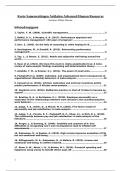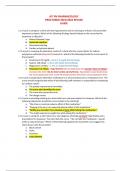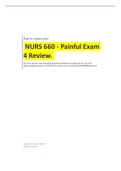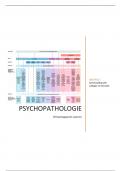Samenvatting
Samenvatting Verplichte Literatuur Advanced Human Resources: Appraisal and Reward
Uitgebreide samenvattingen van bijna alle verplichte artikelen voor dit vak (2024/2025) in het Engels geschreven. Er staat duidelijk aangegeven voor welk artikel de samenvatting is en het is op volgorde van de hoorcollege's geschreven. In de inhoudsopgave kun je zien welke artikelen er in het docum...
[Meer zien]








